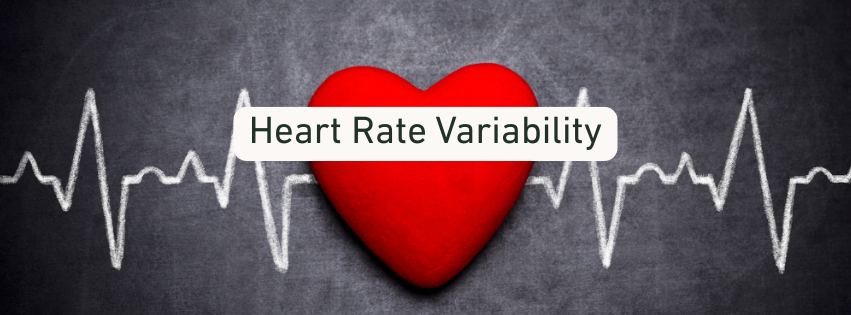
What Your HRV Really Says About Your Stress, Recovery, and Resilience
BALA BITES: WHY HRV IS THE MOST UNDERRATED METRIC IN HEALTH
Imagine two people. The same resting heart rate. The same body composition.
But one is calm and recharged. The other is stressed and teetering.
How do you measure the difference?
Look between their heart beats. That’s where HRV lives.

HRV is short for Heart Rate Variability. It is a quantifiable signal of your internal stress and stress recovery.
HRV tells you how well your body does toggling between fight-or-flight and rest-and-digest.
In a world wired for intensity and overstimulation, HRV is one of the most powerful biometrics you can track.
WHAT IS HEART RATE VARIABILITY (HRV)?
HRV measures the micro-variations in time between each heartbeat.
Not how many times your heart beats per minute. But how evenly spaced those beats are.
A healthy nervous system doesn’t run like a metronome. It responds. It flexes. It adapts.
That variability is a good thing.
- Higher HRV? You’re calm, resilient, and ready.
- Lower HRV? Your system is stuck in survival mode — tense, inflamed, or depleted.

Think of HRV like your stress dial. It’s always moving — and always telling you something.
WHAT AFFECTS HEART RATE VARIABILITY (HRV)?
HRV is a mirror of how you’re living. It reflects your habits more than your genetics.
Some of the biggest levers:
🛌 Sleep — Quality and consistency trump quantity
🍺 Alcohol — Even one drink can lower HRV for up to 48 hours
🏋️ Overtraining — No recovery, no resilience
🧠 Mental Stress — Thoughts matter. So does breath.
⚡️ Inflammation — Ultra-processed foods, seed oils, and sugar = HRV kryptonite
👣 Grounding — Walking barefoot on natural ground may help (yes, seriously)
🌛 Late-night eating — Wrecks recovery and your HRV with it
WHAT YOUR HEART RATE VARIABILITY (HRV) MIGHT BE TELLING YOU
A low HRV means your body is overextended — physically, mentally or emotionally.
A high HRV means you're rested, resilient and handling stress well.
A fluctuating HRV is totally normal. Resort to tracking long-term trends.
Most wearables measure HRV in milliseconds (ms). Ranges vary widely:
- 50–100+ ms: Often seen in younger, more fit individuals
- 20–50 ms: Common in older or more stressed populations
But the real power comes from watching your trend.
One bad night or weird spike? No big deal.
A consistent downward drift? That's worth exploring.
Most importantly, HRV isn’t a diagnosis. It’s a signal. And signals are meant to be listened to.
HOW TO IMPROVE YOUR HEART RATE VARIABILITY (HRV)
Luckily, your HRV is trainable. Support your nervous system and better numbers will follow.
When your HRV improves, so does your life. You discover more stable energy, better sleep and sharper thinking.
Try these strategies:
- Prioritize deep, consistent sleep
- Practice rhythmic breathing (like 4-7-8)
- Build in real rest days
- Limit alcohol and ultra-processed foods
- Experiment with grounding, cold exposure, or sauna
- Finish eating earlier in the evening
HOW TO TRACK IT
You don't need a lab coat or a PhD. Just a wearable — and a little consistency.
Some good options include an Oura Ring, a WHOOP Strap, an Apple Watch, a Garmin watch or 3rd party apps.
It is best to measure it first thing in the morning. Ignore the daily spikes and focus on the trend.
By tracking your HRV over time, you gain biofeedback that helps optimize your training and recovery routines.
FINAL THOUGHT
Your HRV is your body whispering. The more you listen, the better you can act and the more you can recover.
The better you recover, the better you perform — in life, not just workouts.
Switching between stress and calm easily is the game you want to win.
The faster you can do that, the healthier you are.
FURTHER READING
Want more insights like this? Sign up for Bala Bites and get a curated compilation of insights delivered every other week to your inbox
Know why Pecorino Romano is a longevity cheese? Read why science considers it to be the healthiest cheese on the planet